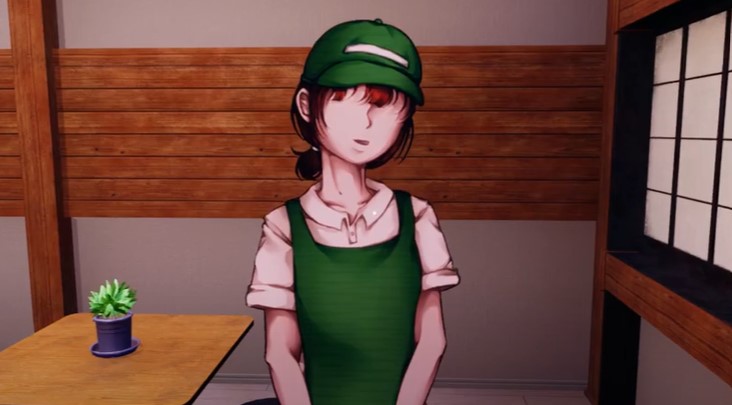Written by Amanda Delio
.jpg) Professor Robert Thomas Howard’s experience in the game industry allows him to teach real-world development opportunities. That’s why he chose five student developers to create their own game called Stranger. Through an initiative with Professor Huai-Rhin Kim who teaches Korean in the School of Languages and Cultures (SLC), Computer Graphics Technology (CGT) teamed up to create an intuitive, interactive experience in video game form.
Professor Robert Thomas Howard’s experience in the game industry allows him to teach real-world development opportunities. That’s why he chose five student developers to create their own game called Stranger. Through an initiative with Professor Huai-Rhin Kim who teaches Korean in the School of Languages and Cultures (SLC), Computer Graphics Technology (CGT) teamed up to create an intuitive, interactive experience in video game form.
“When it comes to games that try to teach language and culture, you get two extremes,” Howard said. “Where do you even begin when you buy a game to learn Korean, from Korea, that is written 100% in Korean? There is no chance of understanding it unless you are already a native level speaker. The other is a game designed to be very pedagogical, written in English, and mimics a classroom setting where you are taught the Korean alphabet.”
Stranger is designed to deliver something in the middle—something that’s not trying to take you to the classroom. While studying Korean through another source, the game will supply support for diverse levels of learning. Stranger’s premise is that the player is a travel blogger in Korea. The story is delivered by simulated blog posts and written from the perspective of the blogger. Inspired by Professor Howard’s favorite educational game The Oregon Trail, Stranger was scripted for cyclic game play that has different outcomes each time you play..jpg)
There is no help for the player in this fictional place where bilingual signs do not exist. The player must survive on their own in this environment. The team started with a controlled environment, engaging the player in activities with words that have close English equivalents. Later, the player can hear Korean-language conversations they are not expected to understand.
As a beginner, the player might get 20 to 30 minutes of play time and then, game over, they receive an airplane ticket home. But when the player returns, they may get a little closer to being able to stay.
Things start off rough; the player has no friends or connections and doesn't understand most things. Eventually, as the player learns more, they achieve better endings. If they do well, the player can become a karaoke star. The hope, with scenarios from bad to good to everything in between, is to get students talking and pushing each other to learn more in hopes of receiving a better outcome.
Upon Stranger’s completion, Professor Kim intends to use it for research. She will allow her students to play the game to measure motivation to learn, as well as a survey on whether the game was fun. The first release is just for Professor Kim’s class, but there are hopes to have the game written in different languages and to become a Steam release. Professor Howard says that these projects never end they just have milestones. He may be in bug-fixing mode for a while, and then when data comes back from Professor Kim, they may want to improve the product and pursue release on commercial gaming platforms.
 CGT had a student team working on Stranger. Juhee Lee was a producer, concept artist, and 3D artist. Alex Silalahi was narrative designer and gameplay scripter. Connor Elsworth was an environmental artist, 3D artist and gameplay scripter. Haichao (Charles) Wang wrote gameplay scripting. Sydney Hobart was the concept artist. Professor Howard felt the students did an incredible job with the incalculable amount of work that they completed. They had a significant impact on the project.
CGT had a student team working on Stranger. Juhee Lee was a producer, concept artist, and 3D artist. Alex Silalahi was narrative designer and gameplay scripter. Connor Elsworth was an environmental artist, 3D artist and gameplay scripter. Haichao (Charles) Wang wrote gameplay scripting. Sydney Hobart was the concept artist. Professor Howard felt the students did an incredible job with the incalculable amount of work that they completed. They had a significant impact on the project.
Please check out the student section to read more about the students involved.
Written by: Amanda Delio
